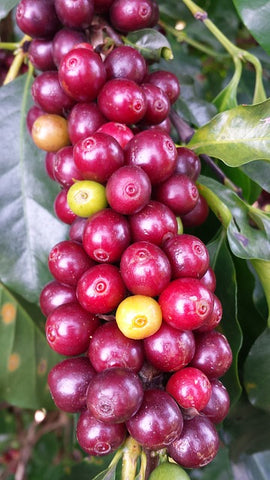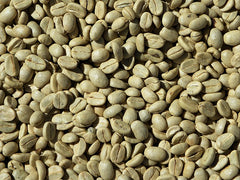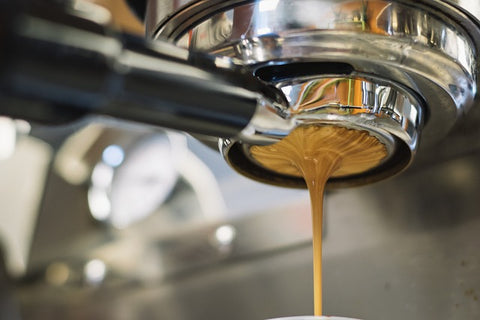Ever wondered what it takes March 23 2016
Have you ever wondered what it actually takes to make a cup of coffee?
We know that it can seem simple, seeing that once you are in a cafe all it takes is a few minutes and you have coffee that is ready to drink. One that hopefully makes the day seem brighter.
But getting the coffee to you is actually a lengthy process because as we all know, you can't rush perfection.
 The whole process begins when the coffee tree is planted. Once it has been planted it takes about 3-4 years for the tree to produce the coffee cherry. This fruit contains the coffee bean, which is actually a seed and not a bean. When it is ripe the cherry turns a deep, bright red and is ready to be picked. Each individual cherry is then picked off the tree, this is often done by hand and is a tedious process.
The whole process begins when the coffee tree is planted. Once it has been planted it takes about 3-4 years for the tree to produce the coffee cherry. This fruit contains the coffee bean, which is actually a seed and not a bean. When it is ripe the cherry turns a deep, bright red and is ready to be picked. Each individual cherry is then picked off the tree, this is often done by hand and is a tedious process.
The cherries must be processed as soon as possible to prevent them from spoiling. This is done by two main methods:
-
The Dry Method
The cherries are spread out and left to dry in the sun while being regularly rotated. They are also covered during the night and during rain. This is done until the moisture content of the cherry drops to 11% and this can take up to 4 weeks. The cherries are then hulled where the skin and pulp are removed in one step and the bean is the only thing left. -
The Wet Method
First the cherries are passed through a pulping machine where the skin and pulp are separated from the bean. The beans are then passed through water channels and are separated by weight and size. The beans are then placed in a water filled fermentation tank and are left there for 12-48 hours. After the fermentation period the beans are washed and dried until their moisture content reaches 11%.
The beans are then milled. Regardless of the processing method the beans are hulled, polished, graded and sorted. The beans go through a rigorous inspection process of the colour and any imperfections. They are then sorted by size and weight and exported.
 50 kg of cherries produces about 10 kg of green beans that then need to be roasted.
50 kg of cherries produces about 10 kg of green beans that then need to be roasted.
Here at Two Spots we source beans from all over the world, including Brazil, Honduras, Guatemala, Ethiopia, Papua New Guinea and India. So you can imagine the journey the beans took to reach your cup.
Roasting is the final stage in prepping the bean for consumption. Roasting is a very tricky process that requires constant attention. It consists of two main stages that are repeated depending on what type of roast is desired:
- Endothermic
In the beginning of the roast the beans are endothermic, what that means is that the beans absorb the heat within the roaster. This is where the beans start to change colour from green to a golden brown. -
Exothermic
This means that the beans release heat instead of absorbing it. This is where the "first crack" happens. The beans reach their optimal heat and crack which causes them to expand and double in size. Some roasts will only progress to the first crack which produces a light roast and then go to the cooling stage. -
Endothermic (again)
This period of the beans absorbing heat again is very short, less than a minute. But it sets the beans up for cracking again. -
Exothermic (again)
The "second crack" happens which signals that the beans have been dark roasted. However, the roasting period after the second crack can vary depending on what type of roast is being produced. -
Cooling
Once the beans have been roasted to the desired level they must be cooled quickly otherwise the beans will continue to "cook". This is usually done by circulating the beans while using fans.
During the roasting process the beans lose approximately 18% of their moisture or weight.
What started out as 50 kg of coffee cherries produces 10 kg of green beans and after roasting provides only 8.2 kg of coffee. Beans from different origins are then mixed together in specific quantities to create a blend that is then brought to the cafes.

It doesn't end there though, once delivered to the cafes the barista needs to follow a specific process to ensure that the extraction of the coffee produces the optimal flavours and aromas. There are many factors that contribute to this including:
-
The Grind
The barista must make sure that the grind of the coffee feels like a mixture between powdered sugar and sand. -
Dosage
On average 20 gr of ground coffee is used to make a double espresso. Although this may vary depending on the cafe/brand. -
Tamping
Once the coffee has been placed in the basket about 18kg of pressure must be applied to compress the coffee. -
Extraction
The coffee is then extracted by a machine at 9 bars, which is 9 times the atmospheric pressure at sea level. -
Serving
Depending on the drink you order the barista will then foam milk and serve a delicious cup of coffee.
It is a truly amazing adventure that the coffee goes on to make it to your cup. Just imagine, the coffee you had today could have possibly taken 4 years to get to you.
Needless to say, we're in love with the process.
